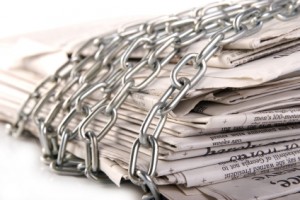Well that is the simplest of News. The seven questions that build up a possible concrete news story are:
- Is it “new”? Recent?
- Does it affect many people?
- Does it affect many people in my intended audience?
- Does it involve well-known people, places or institutions?
- Does it involve conflict or struggle?
- Is it unique or rare?
- Do you think it’s important?
A news report cannot be practically written without answering the 5 W’s and 1 H of the story. Without these the story is incomplete and thus carries no weight age. A lay man can often get confused between a news report and a feature; well there are some points that will help you differentiate the two. News Stories are broadly divided into 2 parts Soft News and Hard News. Soft news is often referred to as Features. Hard News focuses usually on WHAT happened, WHEN and WHO was affected and WHERE. Although most new non-fiction writers prefer to write feature stories, actually these are the most difficult to do well. Skills of newsgathering for hard news stories of fast breaking events (fires, accidents, natural disasters) help you to write feature stories and why is it so? Its three main pillars are
- Eye for details
- Accuracy – double-checking facts
- Anticipating the questions readers will want answered in the story, and answering them
Types of Features:
- News Features: These articles are usually extension of a current News event. They often give the back story and explore the facets of the news story that may otherwise go unreported.
- Informative Features: usually focuses on a relevant social issue for example youth crime or public safety.
- Profiles and Human Interest Features: are uplifting stories about individuals who have impacted on the lives of others or who might have a unique hobby or talent.
- Personal Experiences and Accomplishment Features: these stories often profile someone who has experienced an injury or a loss, has overcome adversity or experienced personal triumph or professional rewards.
What are the main elements of a news story?
- Timeliness – If something is happening NOW, it is more newsworthy than if it happened yesterday or last week or two weeks ago. Oftentimes the most newsworthy element in the story is the most recent happening, the latest thing in a series of happenings which relate to the news event.
- Proximity – How close to your readers is this event taking place? All other things being equal, something that is happening in or near their location is much more meaningful to them than something taking place across town or across the world.
- Prominence – Is a well-known person part of the story? Readers like to read about people they know. If a person is well-known, more readers will be interested than if a person who is mentioned is not known.
- Oddity – If something is out of the ordinary, it may be newsworthy just because of that fact. The strange or unusual is fascinating to many readers.
- Consequence – How will this event impact your readers? How important is it? Something that is more important will be more newsworthy than something that is of little importance, all other things being equal.
- Conflict – Is there a conflict between persons in the story? A rivalry? A misunderstanding? People are naturally drawn to conflict and find it fascinating.
- Human Interest – Anything that appeals to the reader’s emotion and makes him laughs, cry, get angry, feel sympathy, etc….has the potential for human interest.





4 Comments. Leave new
Absolutely correct. Unique and very well written.
Very alluring article !!
Great work Rahul. 🙂
Great article.. Really nice..